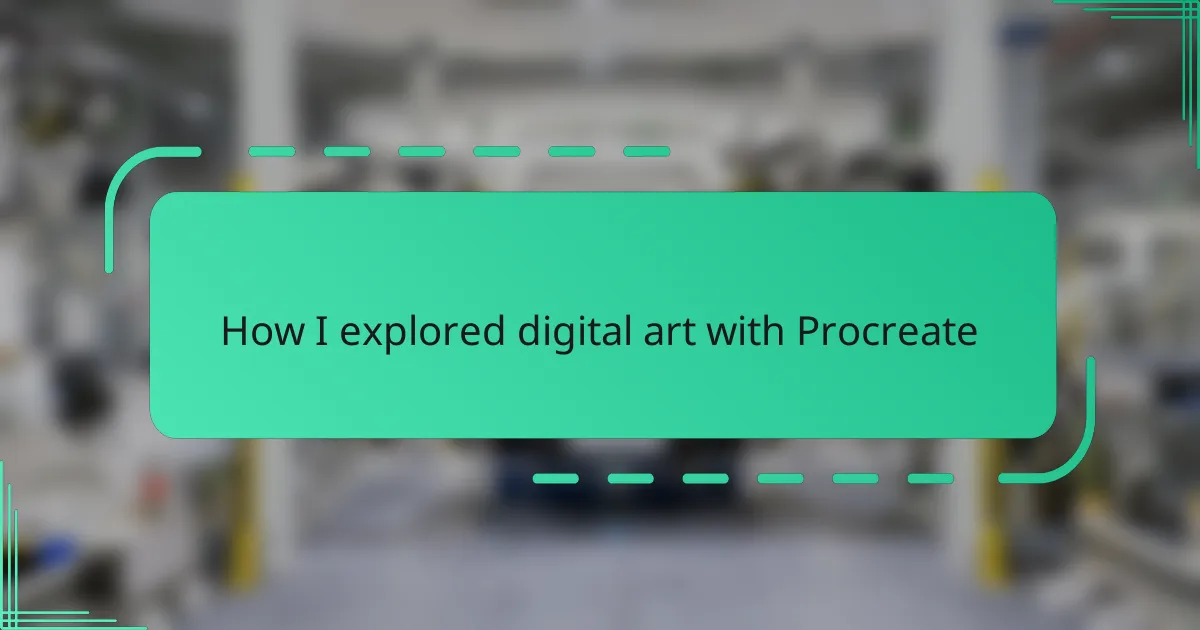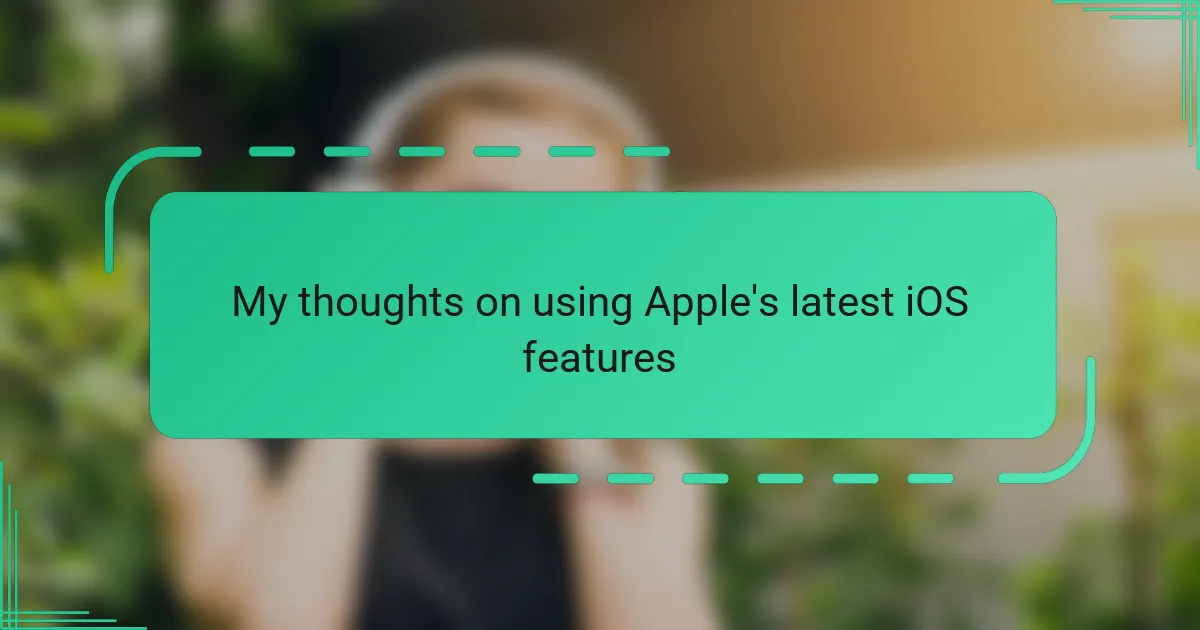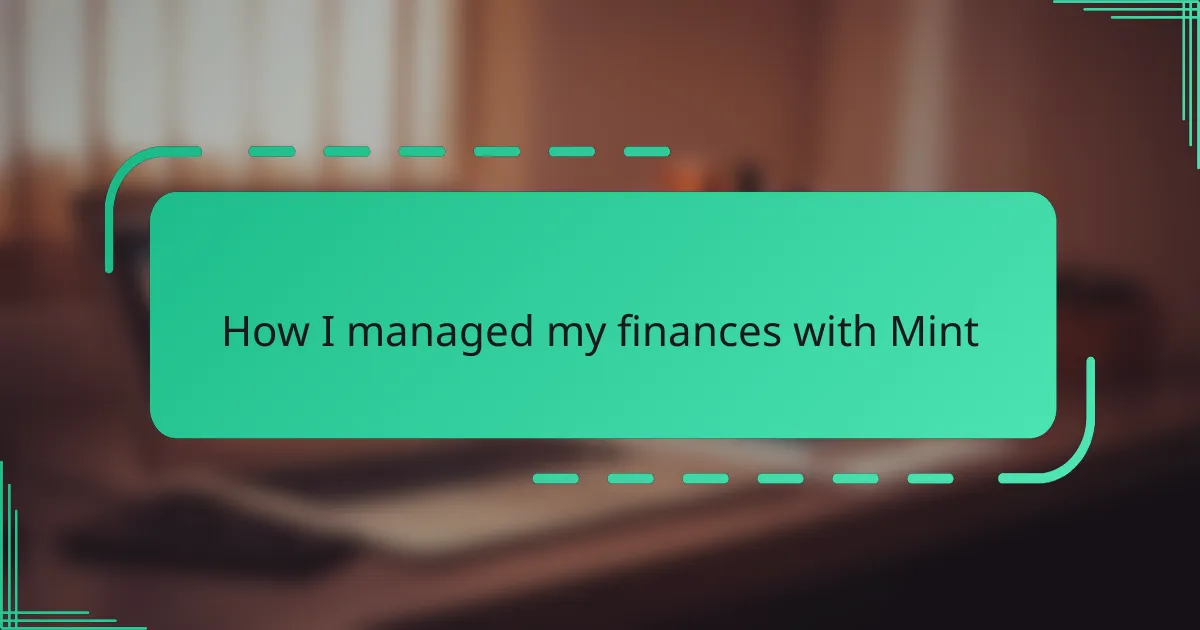Key takeaways
- Digital art technology enhances creativity by offering tools like layers, undo options, and customizable brushes, allowing for an experimental approach to art.
- Procreate’s intuitive interface and customizable workspace facilitate a seamless creative flow, enabling artists to focus on their ideas rather than navigating complex menus.
- Mastering digital techniques such as pressure sensitivity and blending can transform the artistic process, making it more expressive and less stressful.
- Engaging in personal projects fosters exploration and joy in digital art, promoting creation without the fear of making mistakes.

Understanding Digital Art Technology
Digital art technology is fascinating because it blends creativity with powerful software tools. I remember feeling both excited and overwhelmed when I first encountered digital canvases—so different from traditional paints, yet full of endless possibilities. Have you ever wondered how a simple stylus can transform into a magic wand for artists?
What really struck me was how technology removes barriers like drying time or limited colors. Instead, it offers layers, undo options, and infinite palettes, which completely changed my approach to creating art. It’s like having a creative partner that listens and adapts to every stroke.
Understanding these tools isn’t just about learning software; it’s about rethinking what art can be. I found myself asking, “Can technology enhance imagination rather than replace it?” From my experience, the answer is a resounding yes, making digital art a thrilling adventure worth exploring.
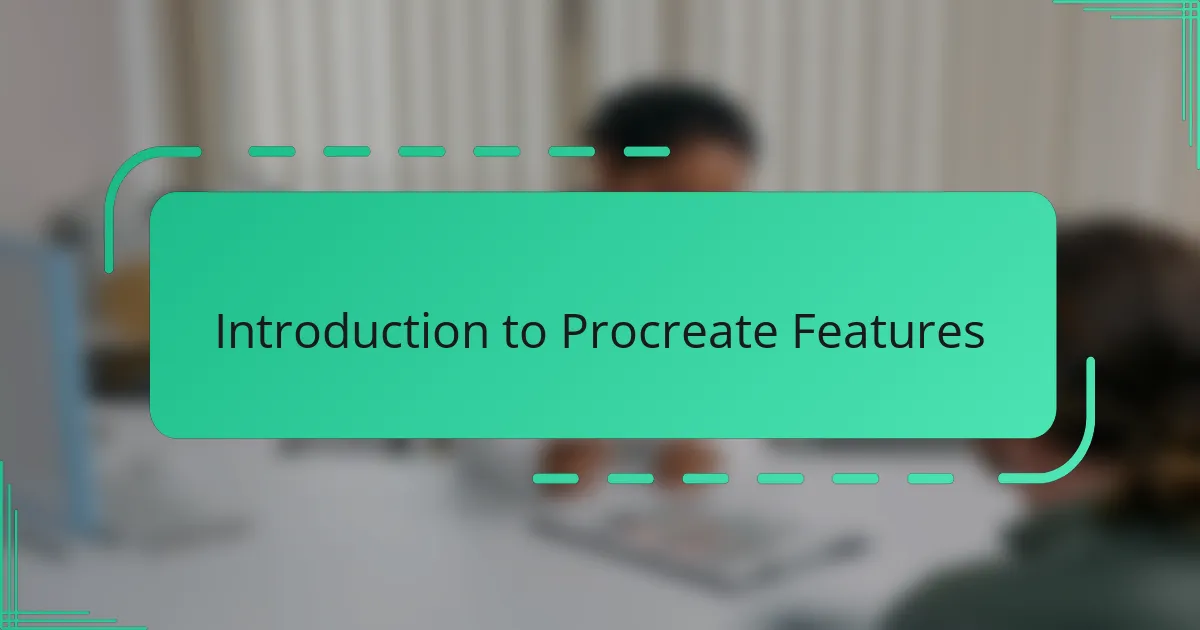
Introduction to Procreate Features
Procreate immediately caught my attention with its intuitive interface—it felt like the app was designed to understand my creative flow rather than force me into rigid menus. Have you ever used software that just fades into the background, letting your ideas take center stage? That’s exactly how Procreate works, offering a seamless blend of simplicity and power.
What amazed me most were the brush options—thousands of them, each customizable to mimic real textures or fantastical effects. I remember experimenting late into the night, amazed at how effortlessly I could switch from a pencil sketch to watercolor washes without ever leaving the app. Features like layering and quick undo felt like having a safety net that encouraged me to take risks and try new styles.
Beyond brushes, Procreate’s tools like the color wheel, blending modes, and time-lapse recording opened up creative doors I didn’t know existed. Watching my drawing evolve in a time-lapse video gave me a new appreciation for my own process, almost like rediscovering my work through a different lens. Isn’t it incredible when a tool not only helps you create but also helps you understand your own art better?
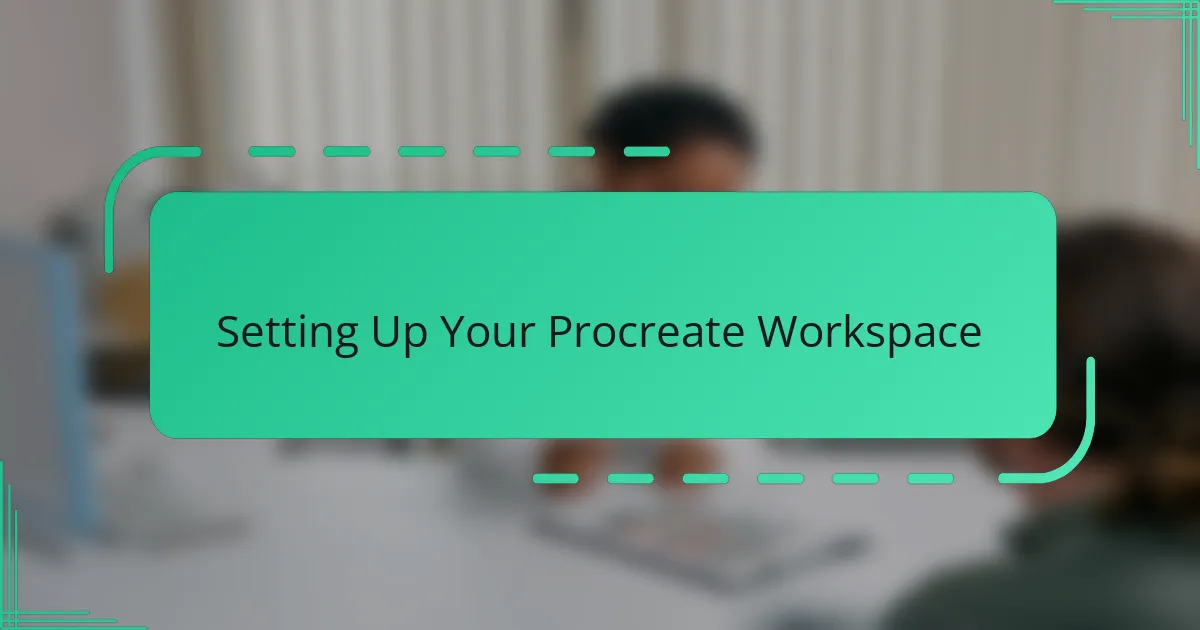
Setting Up Your Procreate Workspace
Getting my Procreate workspace just right was surprisingly crucial to my creative flow. I took time to arrange my brush set and toolbars in a way that felt natural, almost like setting up my own little studio corner. Have you ever noticed how a tidy, intuitive setup can help ideas come faster and free from distraction?
Adjusting the canvas size and resolution was another game-changer. I experimented with different dimensions until I found what suited my style best—it felt empowering to control the digital “paper” as if I was back to choosing the perfect sketchbook. That process made me realize how important these initial settings are to shaping the whole artwork.
The QuickMenu and Gestures customization really personalized my experience. Assigning shortcuts for undo or switching brushes without interrupting my flow saved me so much time and frustration. Isn’t it amazing when technology adapts to your habits, rather than the other way around? This small step helped me immerse myself deeply into creating without breaking my concentration.
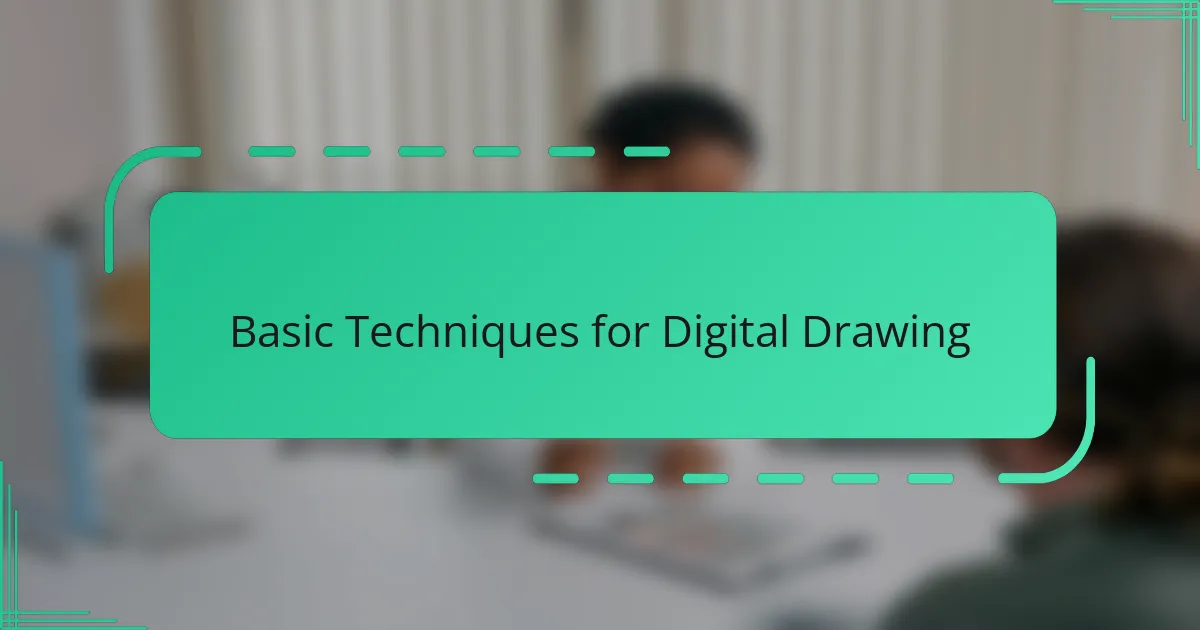
Basic Techniques for Digital Drawing
Mastering basic digital drawing techniques in Procreate was an eye-opener for me. At first, I focused on simple brush strokes to get comfortable with pressure sensitivity—something I hadn’t experienced with traditional tools. Did you know that varying the pressure on your stylus can totally change the thickness and opacity of your lines? It felt like learning a new language for my hand.
One trick I found invaluable was working with layers. Initially, I treated each layer like a new piece of paper, separating elements to avoid mistakes. This approach not only gave me freedom to experiment but also built my confidence, knowing I could undo without ruining the entire artwork. Have you tried isolating parts of your drawing this way? It makes the whole process less stressful and more playful.
Blending colors digitally felt magical, too. Using Procreate’s smudge tool, I could create smooth gradients that would have taken me ages with traditional paints. Early on, I was surprised how gently blending colors enhanced the mood of my sketches. It made me realize that basic techniques aren’t just technical steps—they’re powerful tools to express emotion and depth in your art.
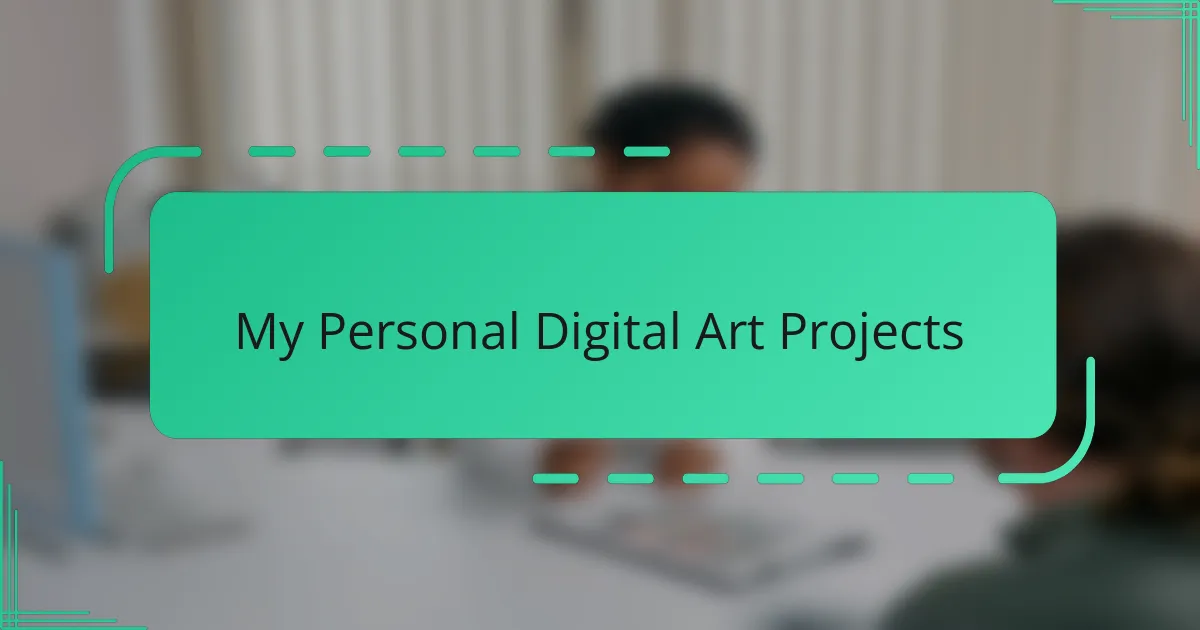
My Personal Digital Art Projects
One of my first personal projects was creating a vibrant digital portrait using Procreate’s custom brushes. I was amazed at how layering allowed me to build depth and texture without worrying about making permanent mistakes. Have you ever felt that sense of freedom, where every stroke feels like a new possibility rather than a risk?
Another project that stands out was experimenting with a surreal landscape, blending real and imaginary elements. I remember how the time-lapse feature captured my creative journey, giving me a fresh perspective on my own evolving ideas. It was thrilling to see something so spontaneous take shape pixel by pixel, almost like watching a dream come alive.
Sometimes, I simply doodled abstract patterns just to unwind, using Procreate as a playground rather than a strict tool. Those moments taught me that digital art isn’t always about perfection—it’s about exploration and joy. Have you ever let yourself create without expectations? If not, I highly recommend trying it as part of your digital art journey.
